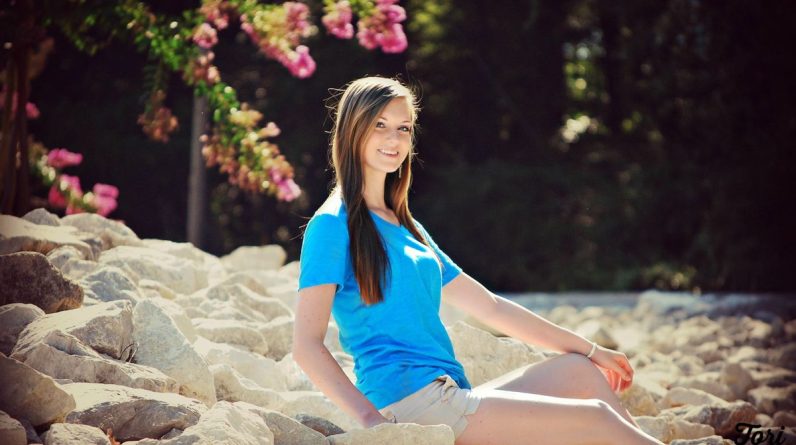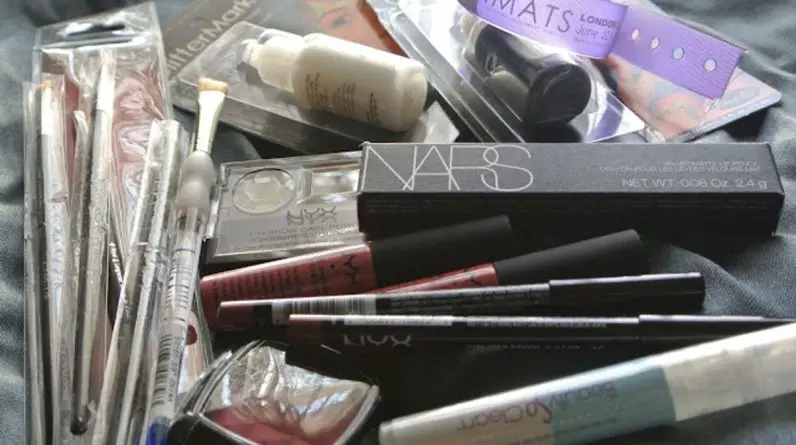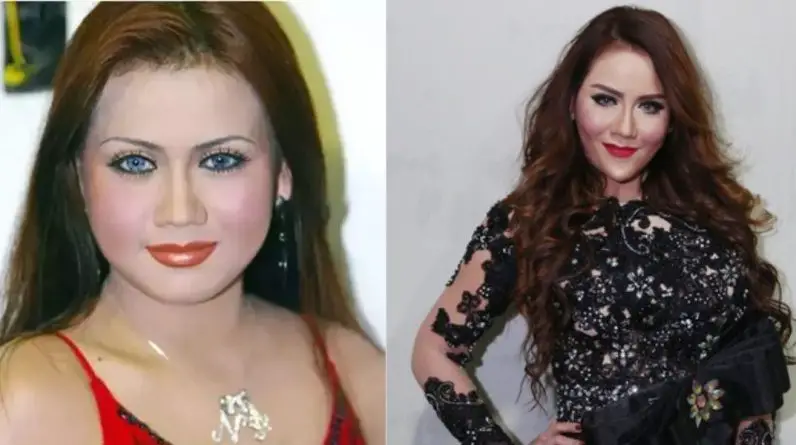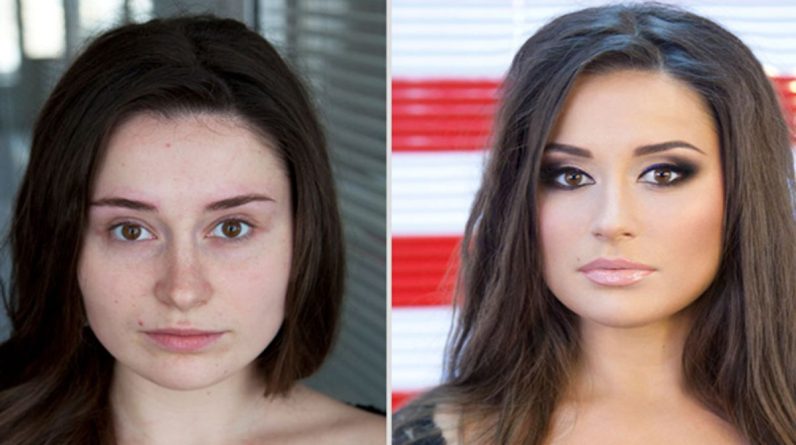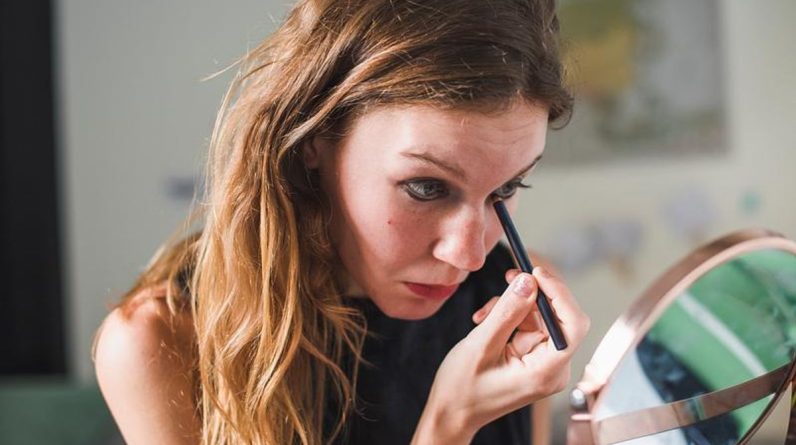Embarking on a journey in the modeling world can be both exhilarating and challenging. This comprehensive guide is crafted to equip aspiring models with the essential tips and tricks needed to navigate this competitive industry successfully. From the runway to photoshoots, these insights will serve as your compass on the path to modeling success.
Contents
- 1 Striking the Perfect Pose
- 2 Skincare for Radiant Confidence
- 3 Grooming Essentials for the Modern Model
- 4 The Role of Wardrobe in Fashion Aesthetics
- 5 Mastering the Camera: A Model’s Performance
- 6 Conclusion
- 7 Frequently Asked Questions
- 7.1 How can I determine my best angles for posing?
- 7.2 What are some essential skincare routines for models?
- 7.3 Why is grooming important for a modeling career?
- 7.4 How can I select outfits that complement my photo shoot?
- 7.5 What are the differences between male and female posing?
- 7.6 How should models handle wardrobe malfunctions during a shoot?
Key Takeaways
- Understanding your angles and practicing poses are crucial for mastering the art of modeling, with the mirror serving as a valuable tool for refinement.
- A consistent skincare regimen contributes to a model’s radiant confidence, enhancing their professional presence on and off the camera.
- Proper grooming is not just about aesthetics but also about confidence, professionalism, and adaptability in the modeling industry.
- The choice and management of wardrobe are integral to fashion aesthetics, requiring collaboration with designers and preparedness for any mishaps.
- Modeling is a performance art that requires expression and the ability to capture the unique essence of the model, with subtle differences in posing for male and female models.
Striking the Perfect Pose

Understanding Your Angles and Movements
Mastering the art of posing is a fundamental skill for any model looking to make an impact in the fashion industry. Understanding your angles and movements is crucial for creating striking visuals that capture the essence of the designer’s vision. Begin by exploring the Power Stance, a pose that exudes confidence and strength. Position your feet shoulder-width apart and place your hands on your hips or let them hang naturally by your sides.
Incorporate dynamic poses such as the S-Curve to accentuate your body’s natural lines. This involves shifting your weight to one leg, creating a subtle curve that enhances your silhouette. Remember, the key to a successful pose is not just in the stance but in the overall composure and expression.
Embrace movement and fluidity in your poses. Experiment with different levels of intensity, from a soft gaze to a fierce look, to convey a range of emotions and characters.
Here are some tips to refine your posing technique:
- Embrace movement: Go beyond static poses and explore dynamic options like squatting, leaning forward, or incorporating subtle adjustments.
- Mind the body language: Maintain a strong posture with squared shoulders for a confident look. Consider leaning or using hand placements to add variety and express different emotions.
- Utilize hand placement: Hands can be a powerful tool in storytelling. Explore options like adjusting clothing, placing them in pockets, or using them to interact with props.
Pro Tip: Practice variations of the S-curve to discover the most flattering angles for your body.
The Art of Editorial Posing
Editorial posing transcends mere body alignment; it’s about telling a story through each gesture and expression. The page highlights ’90s center parts and 3D embellishments in fashion trends, which can inspire dynamic poses that reflect the era’s boldness. Incorporating these elements into your poses can add depth to the visual narrative of a shoot.
Posing for the camera is more than just striking a static position. It’s about embodying a performance.
To master editorial posing, consider the following steps:
- Understand the theme of the shoot and the story you want to convey.
- Experiment with angles and movements that complement the fashion pieces.
- Practice fluid transitions between poses to create a seamless series of shots.
Remember, editorial shoots often seek to push the boundaries of creativity. Feel free to adapt and modify foundational poses to suit the mood and aesthetic of the project. Regular practice is key to building muscle memory and confidence, allowing for spontaneous and impactful posing during the shoot.
Practicing Poses: A Mirror’s Perspective
When practicing poses, the mirror becomes your silent mentor, reflecting not just your image but the nuances of your movements. Regular practice is key to mastering the art of posing; it builds muscle memory and instills a sense of confidence that is essential for any model. By observing yourself in the mirror, you can fine-tune your angles and transitions, ensuring that every pose is deliberate and impactful.
To truly excel in posing, one must embrace the idea of continuous motion, akin to a dance. This dynamic approach allows for a performance that is both captivating and natural.
Here are some foundational poses to practice in front of the mirror:
- The Power Stance
- The S-Curve
- The Three-Quarter Turn
- The Candid Moment
- The Head-Turn Pose
Remember, these poses are just the beginning. Feel free to adapt and modify them to fit the theme and mood of your shoots. Whether it’s for editorial work or a more casual setting, the ability to convey emotion and character through your stance is what sets apart a good model from a great one.
Skincare for Radiant Confidence

The Model’s Skincare Regimen
A model’s skincare regimen is as crucial as their portfolio. Regular cleansing, moisturizing, and sun protection form the trinity of skin health, ensuring a flawless canvas for makeup artists and photographers. A balanced diet, adequate sleep, and exercise complement the external care, providing a natural radiance that shines through on camera.
- Cleansing: Remove impurities and prepare the skin.
- Moisturizing: Hydrate and protect the skin barrier.
- Sun Protection: Prevent damage from harmful UV rays.
Confidence is the best accessory a model can wear. A skincare routine that promotes healthy skin also builds the confidence needed to strike any pose.
Adapting skincare routines to seasonal changes and current trends is also vital. It’s not just about looking good for the moment; it’s about maintaining skin health for a sustainable career in modeling.
Maintaining a Healthy Glow On and Off the Camera
Maintaining a healthy glow both on and off the camera is not just about the right skincare products; it’s a holistic approach that encompasses various aspects of a model’s lifestyle. Stay hydrated, cleanse regularly, and protect your skin from the sun to ensure your complexion remains radiant.
A balanced diet, regular exercise, and ample sleep are the cornerstones of a model’s radiant skin and overall well-being.
Confidence is the best accessory a model can wear. It’s not just about looking good, but feeling good too. Practice posture, poise, and facial expressions to naturally boost your confidence and shine in front of the camera and on the runway.
Here are some quick tips to keep in mind:
- Hydrate throughout the day to keep your skin supple.
- Cleanse your skin thoroughly to remove impurities and makeup.
- Use sunscreen to protect against harmful UV rays.
- Get enough sleep to allow your skin to repair and rejuvenate.
The Impact of Skincare on Professionalism
In the competitive world of modeling, professionalism is paramount, and skincare plays a crucial role in showcasing a model’s dedication to their craft. A well-maintained skincare regimen reflects a model’s commitment to presenting the best version of themselves, which in turn, signals reliability to agencies and clients.
Confidence is the best accessory a model can wear, and it starts with healthy skin. A radiant complexion not only enhances a model’s natural features but also empowers them to perform with assurance. This confidence is often the difference between a good and a great performance, making skincare an indispensable part of a model’s routine.
Maintaining a healthy glow both on and off the camera is not just about looking good; it’s about feeling good and exuding professionalism at every step.
To illustrate the importance of skincare in a model’s professional life, consider the following points:
- Proper grooming, including skincare, is a sign of a model’s professionalism.
- A consistent skincare routine boosts a model’s confidence, leading to more compelling performances.
- Healthy skin is a canvas for makeup artists, essential for versatility in various looks and styles.
Grooming Essentials for the Modern Model

Why Grooming is the Key to Modeling Success
Impeccable grooming is more than skin-deep; it’s a testament to a model’s commitment to their craft. First impressions are crucial in the fashion industry, and a well-groomed appearance can make or break a model’s career. It’s the polish that complements talent, ensuring that models not only look the part but also embody the essence of professionalism and reliability.
- First Impressions Last: A model’s grooming is the first thing noticed, setting the stage for all interactions.
- Versatility and Adaptability: Groomed models adapt to diverse styles, becoming chameleons of fashion.
- Professionalism and Reliability: Meticulous grooming signifies a model’s dedication to their role.
- Confidence Booster: Proper grooming accentuates features, empowering models to shine.
Grooming is not merely about aesthetics; it’s an integral part of a model’s arsenal, enhancing their ability to represent brands with authenticity. It’s a silent communicator of a model’s attention to detail and their understanding of the beauty and fashion landscape.
Expert Tips for Model-Worthy Grooming
Achieving the perfect look for a photoshoot or runway show goes beyond the surface; it’s about enhancing your natural beauty and presenting the best version of yourself. Professional consultations are crucial; experts like hairstylists and makeup artists offer personalized advice that can elevate your grooming to the next level.
Regular practice is key to mastering grooming techniques. Whether it’s applying makeup or styling hair, familiarity breeds efficiency, which is essential during the fast-paced environment of shoots and shows. A healthy lifestyle also contributes significantly to your appearance, reflecting in your skin, hair, and overall vitality.
Proper grooming is not just a routine; it’s a statement of professionalism and reliability. It’s a confidence booster that empowers models to captivate audiences and embody the essence of the brand they are representing.
Remember, grooming is an ongoing process. It’s important to stay updated with the latest beauty and fashion trends, as they can influence your grooming choices. For instance, recent posts on beauty hacks, makeup tutorials, and fashion tips can provide fresh insights for your next project.
FAQs About Grooming in the Modeling Industry
After delving into the FAQs about grooming in the modeling industry, it’s clear that grooming is more than just a superficial aspect of modeling. Grooming is an essential component of a model’s toolkit, enhancing their ability to embody the desired image for various campaigns and projects.
- Q1: How does skincare play a role in modeling?
Skincare is crucial as it ensures a clean and vibrant canvas for makeup artists, which is indispensable for both photo shoots and runway shows. - Q2: Is makeup essential for male models?
Absolutely, makeup is utilized to accentuate features and present a refined appearance, which is just as important for male models as it is for females. - Q3: How can models maintain healthy hair?
Consistent hair care routines and professional advice are key to maintaining healthy, camera-ready hair.
Grooming transcends mere aesthetics; it’s about projecting confidence, professionalism, and the very essence of the brand or designer’s vision.
The Role of Wardrobe in Fashion Aesthetics

Selecting Outfits that Enhance the Shoot
The right outfit can transform a photoshoot, elevating the model’s confidence and the overall aesthetic. Selecting the perfect ensemble is a collaborative effort that involves understanding the theme of the shoot and the model’s unique features. A well-chosen wardrobe not only complements the model’s physique but also resonates with the intended message of the campaign.
Versatility is key when building a model’s wardrobe. Essential pieces should be adaptable to various styles and contexts. Here are some wardrobe essentials:
- Classic white shirt
- Well-fitted pair of jeans
- Versatile jackets
Embrace your uniqueness and dress in a way that boosts your confidence. Your self-assurance is visible in every frame.
Remember, the goal is to create a harmonious visual narrative. Outfits should not overpower the model but rather, enhance their presence. It’s about finding the balance between fashion and the model’s natural allure.
Collaborating with Designers and Stylists
The synergy between models, designers, and stylists is pivotal in crafting the visual narrative of a fashion shoot. Designers embraced technology, integrating digital elements that enhance the storytelling of each garment. This collaboration is not just about wearing clothes; it’s about embodying the creative vision and bringing it to life.
Effective communication is key. Mood boards, for example, are essential tools that allow all parties to align on the direction of the shoot. By sharing inspiration and ideas, everyone involved can work towards a unified goal, ensuring that the final images are cohesive and impactful.
The relationship between a model and their stylist can be transformative, elevating the model’s confidence and the shoot’s overall aesthetic.
Here are some practical steps for a successful collaboration:
- Establish clear communication channels.
- Share mood boards and inspiration.
- Respect each other’s expertise and contributions.
- Be open to experimentation and feedback.
Remember, the goal is to create a harmonious blend of fashion, beauty, and artistry that resonates with the audience.
Wardrobe Malfunctions: Prevention and Quick Fixes
In the fast-paced world of fashion modeling, being prepared for any wardrobe malfunction is not just a necessity, it’s an art. Always have a basic emergency kit on hand, including items like safety pins, double-sided tape, and a small sewing kit. These essentials can be lifesavers when quick fixes are needed.
Versatility in your wardrobe is also key. Opt for pieces that are adaptable and can be modified on the go. For example, a well-fitted pair of jeans and a classic white shirt are indispensable items that work for a variety of looks and situations.
Confidence is your greatest asset. Embrace your uniqueness and be prepared to improvise when unexpected wardrobe challenges arise.
Remember, the goal is to ensure that your wardrobe enhances your performance, not hinders it. By being proactive and resourceful, you can prevent minor issues from becoming major distractions.
Mastering the Camera: A Model’s Performance

Posing as an Art of Expression
Posing for the camera transcends mere static positions; it is an art form akin to a performance. Embrace the fluidity of movement and the portrayal of varied emotions to truly capture the essence of expression. Each pose tells a story, with the model as the narrator, guiding the viewer through a visual journey.
- Embrace movement: Go beyond static poses and explore dynamic options like squatting, leaning forward, or incorporating subtle adjustments.
- Mind the body language: Maintain a strong posture with squared shoulders for a confident look. Consider leaning or using hand placements to add variety and express different emotions.
- Utilize hand placement: Hands can be a powerful tool in storytelling. Explore options like adjusting clothing, placing them in pockets, or using them to interact with props.
Posing is not just about the position of the body, but the intention behind it. A model’s awareness of their body language and the subtle nuances of their expressions can transform a simple photograph into a compelling narrative.
The art of posing is also about understanding the unique aspects of the model’s presence. Whether it’s capturing the gentlemanly poise or the influencer’s casual charisma, each model brings their own flair to the shoot. It’s the photographer’s role to recognize and highlight these individual traits, creating images that are both authentic and striking.
The Subtleties of Male vs. Female Posing
The distinction between male and female posing is nuanced, yet crucial in the world of modeling. Men’s poses often exude strength and stability, while women’s poses tend to emphasize grace and fluidity. The photographer’s role is to capture these subtleties, ensuring that the model’s unique traits are highlighted in a way that complements the intended fashion aesthetic.
In the dynamic landscape of fashion photography, understanding the gender-specific intricacies of posing is key to creating impactful images.
For male models, the challenge lies in balancing a masculine presence with the right amount of motion to avoid stiffness. Classic poses like the ‘contrapposto’ have been adapted to convey a sense of movement while maintaining a dominant stance. Here’s a quick guide to the primary categories of male poses:
- Standing poses: Aim for a balance between rigidity and softness.
- Sitting poses: Adjust leg, arm, and hand placements for variety.
- Reclined poses: Explore different angles for a relaxed yet composed look.
Female models, on the other hand, often work with poses that flow naturally, using their entire body to create lines and shapes that are visually appealing. The key is to practice in front of a mirror, experimenting with angles and movements to discover what works best for each individual.
Capturing the Essence of the Model’s Unique Presence
In the world of modeling, the ability to convey a unique presence in front of the camera is what distinguishes a good model from a great one. Photographers and models work in tandem to capture the essence of the model’s individuality, which is often the soul of a photoshoot. This process involves more than just physical appearance; it’s about bringing forth the model’s personality, emotions, and story.
Effective communication between the model and the photographer is crucial. It allows the model to understand the desired mood and theme of the shoot, and for the photographer to guide the model towards poses that highlight their strengths. Here are some tips to ensure the model’s essence is captured:
- Collaborate with the photographer to convey your story.
- Practice fluid movements and expressions for candid spontaneity.
- Master the head-turn pose to draw attention to facial features.
The true art of modeling lies in the subtle interplay between the model and the camera, where each glance and gesture contributes to the narrative of the image.
Remember, each model brings a unique set of qualities to the table. Embracing these differences and using them to your advantage will not only enhance the photoshoot but also contribute to defining fashion aesthetics.
Elevate your modeling game with expert tips on mastering the camera and enhancing your performance. Dive into a world of beauty, fashion, and self-expression by visiting our website. Discover the latest makeup tutorials, hair styling guides, and fashion insights to keep you ahead of the curve. Don’t wait to unleash your full potential—click through to explore our treasure trove of model’s secrets and shop the essentials for your next photoshoot. Your spotlight awaits at [Beauty Trend](https://www.beautytrend.com)!
Conclusion
In the world of fashion modeling, striking the perfect pose and defining aesthetics go beyond mere physical appearance; it’s an art form that requires practice, confidence, and an understanding of one’s unique attributes. From mastering the subtleties of body language to maintaining a radiant complexion, each aspect contributes to a model’s ability to embody the vision of designers and captivate audiences. As we’ve explored, grooming, wardrobe essentials, and networking are not just accessories to a model’s career but foundational elements that, when honed, can elevate their work from mere poses to powerful performances. Whether breaking stereotypes or reinforcing trends, models are the living canvases that bring the fashion world to life, and it is their dedication to the craft that defines the ever-evolving aesthetics of beauty and style.
Frequently Asked Questions
How can I determine my best angles for posing?
Understanding your best angles comes with practice. Spend time in front of a mirror experimenting with different poses, and consider recording yourself during practice sessions to analyze your movements and angles. Professional photographers can also provide valuable feedback.
What are some essential skincare routines for models?
A basic skincare routine should include cleansing, toning, and moisturizing twice daily. Regular exfoliation, using sunscreen, and staying hydrated are also crucial for maintaining healthy, radiant skin.
Why is grooming important for a modeling career?
Grooming is essential as it affects a model’s appearance, confidence, and professionalism. It ensures that models present themselves in the best light, meeting the industry’s high standards and the expectations of clients and designers.
How can I select outfits that complement my photo shoot?
Choose outfits that align with the theme of the shoot and flatter your body type. Collaborate with stylists and designers to find clothing that enhances the aesthetic vision while also allowing you to pose comfortably and confidently.
What are the differences between male and female posing?
Male posing often emphasizes strength and structure, with more squared angles and defined postures, while female posing tends to highlight curves and softness, with more fluid and dynamic movements. However, individual style and the shoot’s concept can influence these general trends.
How should models handle wardrobe malfunctions during a shoot?
Stay calm and professional. Have a basic repair kit on hand for quick fixes, and work with the wardrobe team to resolve the issue swiftly. If a malfunction occurs during a live event, continue with grace and address the issue off-stage.



